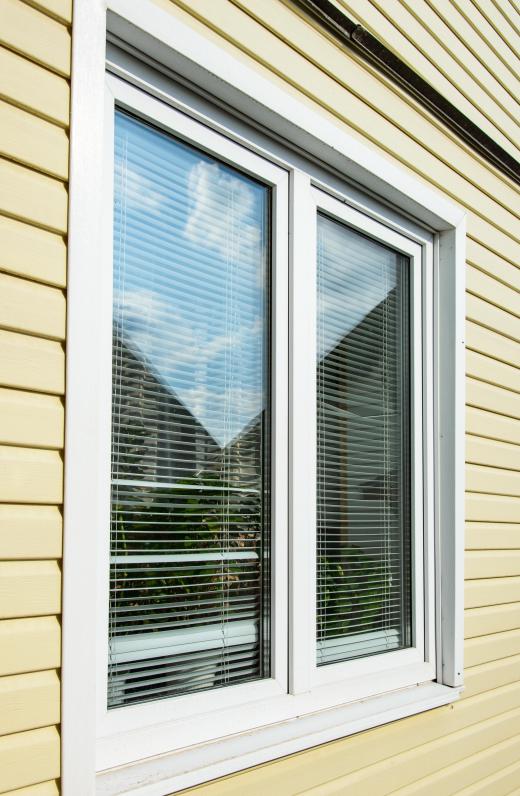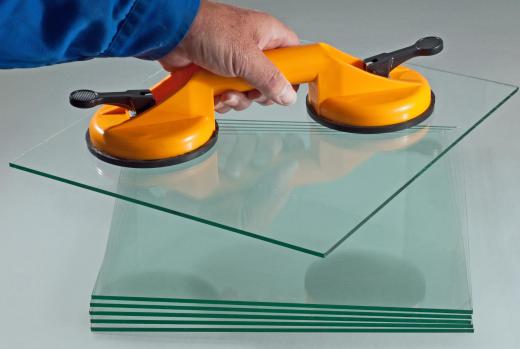Plate glass is a type of glass that is cast in a solid plate, typically through a roller process. The result is extremely flat and free of distortions. This type of glass is often used to make windows, and it is also utilized in the manufacture of mirrors, tables, and other objects that require extremely flat glass. There are a variety of different weights available, ranging from incredibly thick and highly durable plate glass to more delicate varieties.
To make plate glass, liquid glass is spread out on a metal table while it is still extremely hot, and then rollers are passed over the table to smooth and polish it as it cools, creating the desired uniform sheet. Depending on the precise details of the manufacturing method, the glass may need to be polished again once it has cooled. This type of glass is also produced through a floating process, using a bath of molten tin to float the liquid glass as it cools and sets.

One of the major disadvantages of plate glass is that it can be very brittle. For this reason, safety or breakaway glass is often used in situations where it could be shattered, as people could be seriously injured by broken shards. The glass can also be expensive to replace, as anyone who has broken a picture window is probably already aware. Glass in general tends to be expensive because the manufacturing process can get quite complex if the glass is to be of high quality.

Many glassmaking firms offer plate glass in their range of products. It can usually be purchased through companies that specialize in glass or through large hardware stores. Many stores keep a set amount in specific sizes on hand; for unusual sizes, consumers can either cut down an existing sheet of glass or custom order the desired size. Glass cutting is usually best accomplished by a professional, especially with thicker grades.

When purchasing plate glass, the buyer should consider the thickness of the glass. If the glass is being used in a structure, he or she may want to check on prevailing building codes, to ensure that the glass is of an acceptable thickness. When the glass is for another project, the buyer should remember that the thicker glass is, the more it weighs, but it is also more durable. Shoppers may want to pick up a few sample pieces so that they can find the perfect thickness for the project.
Ever since she began contributing to the site several years ago, Mary has embraced the exciting challenge of being a About Mechanics researcher and writer. Mary has a liberal arts degree from Goddard College and spends her free time reading, cooking, and exploring the great outdoors.

